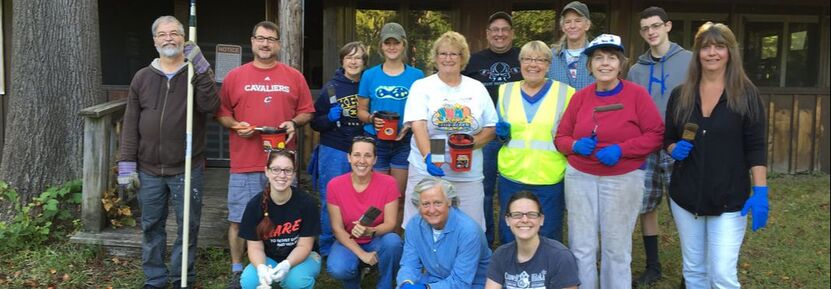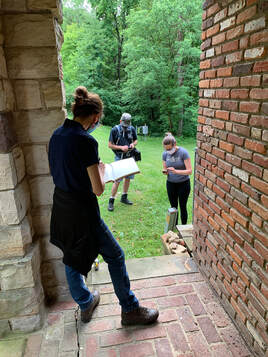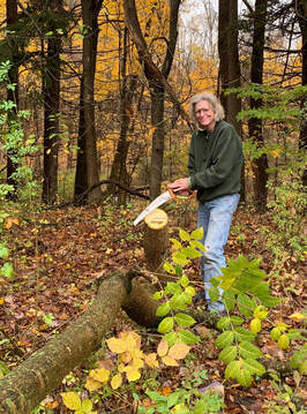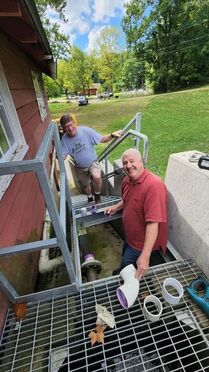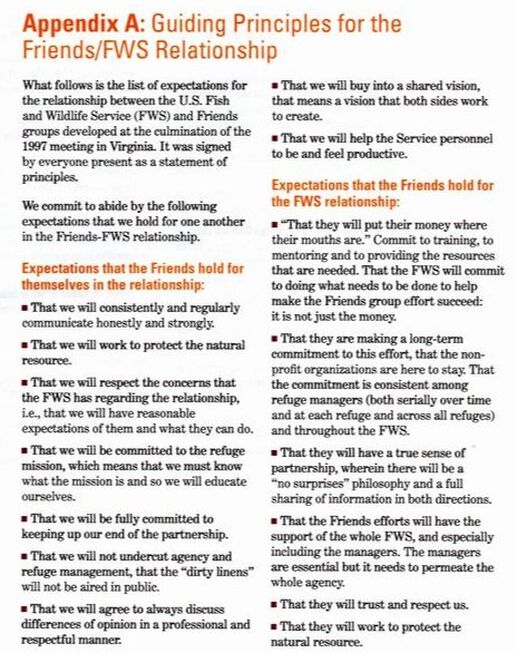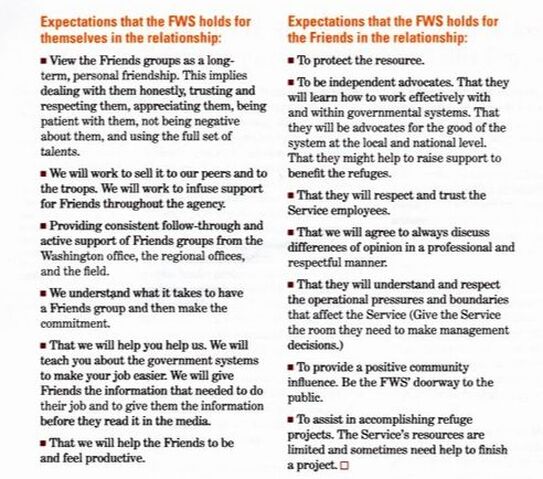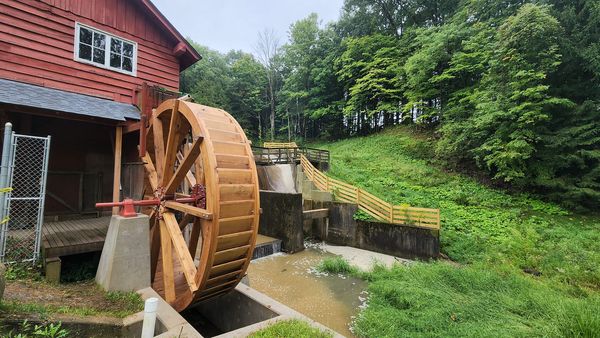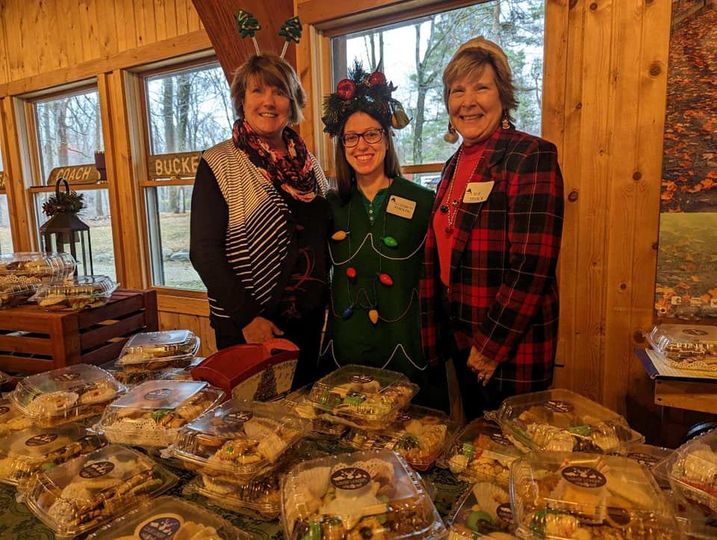what is a Friends' Group?
Friends of Richfield Heritage Preserve is modeled on the many National Park Service Friends' Groups: nonprofit, tax exempt organizations established to support a specific park. Friends Groups are increasingly sought by park administrators to help leverage limited resources. " The only problem with Friends Groups in the National Park System is that there aren't enough of them" - Curt Buchholtz, Executive Director, Rocky Mountain Nature Association
"Friends Groups benefit parks in various ways, providing volunteer services, conducting fundraising efforts, assisting with resource management and preservation and publicizing important issues." (http://www.nps.gov/partners/friends_groups_doc.htm)
"Successful Friends Groups are created for "Friend raising", not just for fundraising. The Friends Groups members have a passion for the park and a desire to help it fulfill its mission." (Making Friends Handbook p.38. 2009 National Park Service)
" 'Love' for certain parks emerged as a factor that both helps ameliorate conflict among partners and serves as the primary motivator for many volunteers" (Co-coordinated Volunteer Programs at U.S. National Parks. a case study by Joseph M. Follman)
Most Friends do not replace park funding for operational needs, rather try to add value to the visitor experience through unique projects that expand and enhance the park's resources or mission. (Best Practices in Friends Groups and National Parks p. 10. 2012, National Parks Conservation Association
"Friends Groups benefit parks in various ways, providing volunteer services, conducting fundraising efforts, assisting with resource management and preservation and publicizing important issues." (http://www.nps.gov/partners/friends_groups_doc.htm)
"Successful Friends Groups are created for "Friend raising", not just for fundraising. The Friends Groups members have a passion for the park and a desire to help it fulfill its mission." (Making Friends Handbook p.38. 2009 National Park Service)
" 'Love' for certain parks emerged as a factor that both helps ameliorate conflict among partners and serves as the primary motivator for many volunteers" (Co-coordinated Volunteer Programs at U.S. National Parks. a case study by Joseph M. Follman)
Most Friends do not replace park funding for operational needs, rather try to add value to the visitor experience through unique projects that expand and enhance the park's resources or mission. (Best Practices in Friends Groups and National Parks p. 10. 2012, National Parks Conservation Association
WHY PARKS & FRIENDS GROUPS MATTER by Deb Yandala April 21, 2016
Happy National Park Week! As we celebrate our national park this week, I’ve been reflecting upon why parks and their nonprofit partners are relevant, both today and in the future.
While in Washington, D.C. at a recent meeting of National Park Friends Alliance—an organization of friends group executive directors— I heard many interesting things about the direction of the National Park Service (NPS). In particular, Jon Jarvis, the Director of the National Park Service, made an interesting comparison. He compared Gateway National Recreation Area in New York City to Golden Gate National Recreation Area in San Francisco. Both were founded at the same time with a similar amount of federal funding. Both are in large cities with the capability of attracting a large number of visitors.
In 2015, Golden Gate had 14.9 million visits while Gateway had 6.4 million visits. According to Director Jarvis, the main contributing factor to this difference is the work that the Golden Gate National Parks Conservancy has done to attract and serve visitors. As a nonprofit organization, the Golden Gate National Parks Conservancy have raised millions of dollars for park improvements and visitor services. They supplement NPS staff by operating key elements of the park, which could not be supported through federal dollars. Gateway NRA does not have a comparable support organization.
In Cuyahoga Valley National Park, our Conservancy raises dollars for park projects while contributing operational staffing and leadership to a number of programs, including environmental education, volunteerism, the arts, and retail. We are among the largest national park friends groups in the country—largely because our community wants CVNP to have a multitude of programs, educate children, and preserve natural and cultural resources in our park. With over two million visitors every year, Cuyahoga Valley National Park is certainly worthy of support during this centennial year.
The Conservancy operates the Cuyahoga Valley Environmental Education Center in partnership with the National Park Service. We have looked to Golden Gate National Parks Conservancy for inspiration. You should also know that many other national parks and their friends groups look to us for inspiration, because of what we’ve been able to accomplish in an urban, Midwestern location. Our growth and impact is a good model for others—and we have you, our donors, members, and advocates, to thank for our success.
- Deb
www.conservancyforcvnp.org
Happy National Park Week! As we celebrate our national park this week, I’ve been reflecting upon why parks and their nonprofit partners are relevant, both today and in the future.
While in Washington, D.C. at a recent meeting of National Park Friends Alliance—an organization of friends group executive directors— I heard many interesting things about the direction of the National Park Service (NPS). In particular, Jon Jarvis, the Director of the National Park Service, made an interesting comparison. He compared Gateway National Recreation Area in New York City to Golden Gate National Recreation Area in San Francisco. Both were founded at the same time with a similar amount of federal funding. Both are in large cities with the capability of attracting a large number of visitors.
In 2015, Golden Gate had 14.9 million visits while Gateway had 6.4 million visits. According to Director Jarvis, the main contributing factor to this difference is the work that the Golden Gate National Parks Conservancy has done to attract and serve visitors. As a nonprofit organization, the Golden Gate National Parks Conservancy have raised millions of dollars for park improvements and visitor services. They supplement NPS staff by operating key elements of the park, which could not be supported through federal dollars. Gateway NRA does not have a comparable support organization.
In Cuyahoga Valley National Park, our Conservancy raises dollars for park projects while contributing operational staffing and leadership to a number of programs, including environmental education, volunteerism, the arts, and retail. We are among the largest national park friends groups in the country—largely because our community wants CVNP to have a multitude of programs, educate children, and preserve natural and cultural resources in our park. With over two million visitors every year, Cuyahoga Valley National Park is certainly worthy of support during this centennial year.
The Conservancy operates the Cuyahoga Valley Environmental Education Center in partnership with the National Park Service. We have looked to Golden Gate National Parks Conservancy for inspiration. You should also know that many other national parks and their friends groups look to us for inspiration, because of what we’ve been able to accomplish in an urban, Midwestern location. Our growth and impact is a good model for others—and we have you, our donors, members, and advocates, to thank for our success.
- Deb
www.conservancyforcvnp.org
A few successful Friends Groups:
Central Park Conservancy www.centralparknyc.org
Conservancy for the Cuyahoga Valley National Park www.conservancyforcvnp.org
Friends of Acadia National Park friendsofacadia.org
Friends of Beaver Creek State Park www.friendsofbeavercreekstatepark.org
Friends of Cape Cod National Seashore fccns.org
Friends of Chrisholm www.chrisholmhistoricfarmstead.org/
Friends of Wolf Creek/Pine Run Grist Mill https://ohiodnr.gov/discover-and-learn/safety-conservation/about-odnr/division-parks-watercraft/friends-of-ohio-state-parks/friends-of-wolf-creek
Golden Gate National Parks Conservancy About: https://www.parksconservancy.org/ History: https://www.parksconservancy.org/about/history-parks-conservancy
Central Park Conservancy www.centralparknyc.org
Conservancy for the Cuyahoga Valley National Park www.conservancyforcvnp.org
Friends of Acadia National Park friendsofacadia.org
Friends of Beaver Creek State Park www.friendsofbeavercreekstatepark.org
Friends of Cape Cod National Seashore fccns.org
Friends of Chrisholm www.chrisholmhistoricfarmstead.org/
Friends of Wolf Creek/Pine Run Grist Mill https://ohiodnr.gov/discover-and-learn/safety-conservation/about-odnr/division-parks-watercraft/friends-of-ohio-state-parks/friends-of-wolf-creek
Golden Gate National Parks Conservancy About: https://www.parksconservancy.org/ History: https://www.parksconservancy.org/about/history-parks-conservancy
Much literature has been devoted to the relationship between the governmental park administrations and Friends Groups. Key elements of successful partnerships include long-term planning, clear and frequent communication, a culture of collaboration, and mutual respect.
Below is an example of a mutually respectful agreement.
Below is an example of a mutually respectful agreement.

